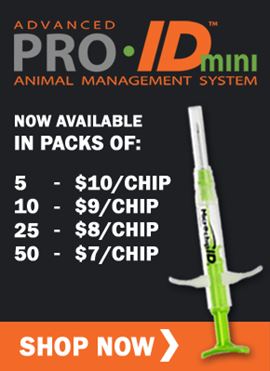
Puppy Vaccination 101: A Guide for Breeders and Dog Owners
September 28 is World Rabies Day, which means it’s the perfect time to discuss the importance of vaccinating puppies against rabies and other life-threatening diseases.
If you’ve been searching for information about vaccines for your canines, the different types of available vaccines, the diseases they guard against, and the recommended vaccination schedules for puppies, your search is finally over. Read on to learn how you can keep your puppies happy, healthy, and safe.
How Do Vaccines Protect Dogs?
Vaccines are designed to trigger protective immune responses in animals, helping them fight future infections from disease-causing agents.
It’s especially important for breeders to understand the immunization needs of their puppies. Not all puppies should be vaccinated with all available vaccines. This is why canine vaccines have been divided into two classes: core and non-core.
Core vaccines provide essential protection and should be given to every dog, while non-core vaccines are recommended only for certain dogs. Vaccination with non-core vaccines can depend upon a number of factors, such as the dog’s age, breed, health status, and potential for exposure and infection.
Core vaccines include protection against canine distemper, parvovirus, hepatitis, and rabies. Non-core vaccines include protection against Lyme disease, giardia, Bordetella, parainfluenza, coronavirus, leptospirosis, and rattlesnake venom. A veterinarian can help you decide on a vaccination program that will offer the best protection possible in the early stages of a dog’s life.
Canine Diseases with Available Vaccinations:
Rabies: Typically, this deadly virus is transferred through a bite, and both humans and animals are susceptible to the disease. Symptoms include disorientation, excessive salivation, and vomiting.
Distemper: A highly contagious and often fatal disease, distemper is transmitted from animal to animal through body secretions. Symptoms of the virus include fever, diarrhea, watery discharge from the eyes and nose, seizures, and muscular twitches.
Parvovirus: Like distemper, parvovirus is highly contagious and can be fatal, especially in puppies. The virus is transmitted from animal to animal through feces. Symptoms include diarrhea, lethargy, lack of appetite, and vomiting.
Bordetella: This respiratory disease is also known as kennel cough. Dogs with kennel cough will exhibit a slight to serious cough and low energy. Kennel cough is a treatable condition, but canines that frequent the groomer, boarding kennels, or other areas with multiple dogs should be vaccinated annually.
Coronavirus: Coronavirus disease, often called corona, is a viral intestinal infection in dogs. The disease is spread by the ingestion of feces from a dog infected with the disease. The primary symptom associated with canine coronavirus is diarrhea, and it usually lasts several days.
Hepatitis: This highly contagious disease targets the liver. The virus is shed into the feces and saliva, making both infectious to other dogs. Symptoms range but may include: fever, anorexia, lethargy, vomiting, diarrhea, abdominal pain, swelling, and bruising of the skin. This condition can be deadly if left untreated.
Leptospirosis: Leptospirosis is a bacterial disease that affects the nervous system, liver, kidneys, and reproductive system. This disease is also zoonotic, which means it can be transferred from animals to humans. Symptoms range but can include: fever, joint or muscle pain, weakness, lack of appetite, vomiting, and diarrhea. The disease is contracted by coming into contact with the leptospira bacteria in infected water, soil, or mud while swimming, passing through, or drinking contaminated water. Contact made with urine from an infected animal can also spread the disease.
Parainfluenza: A highly contagious respiratory disease often mistaken for kennel cough, animals infected with parainfuenza typically display a dry, hacking cough. Environmental factors (such as drafts, colds, and high humidity) may enhance susceptibility to the disease.
Lyme disease: This infectious disease is caused by the transmission of bacteria from a tick to its host. The Lyme vaccine targets two key outer surface proteins involved in the transmission of canine Lyme disease. Symptoms can include: fever, lameness, swelling of the joints, swollen lymph nodes, lethargy, and loss of appetite.
Giardia: These organisms live in the small intestines of dogs. A dog becomes infected by eating the cyst form of the parasite. Once in the small intestine, the cyst opens and releases an active form of the parasite, which then attaches itself to the intestinal wall and reproduces. Once passed through feces, giardia can contaminate the environment and water to infect other animals and people. Symptoms include: diarrhea, weight loss, and abnormal feces (pale in color and especially malodorous).
Dog Vaccine & Treatment Schedule
Missing even one vaccination may leave a puppy that has been exposed to a serious disease defenseless. By following the chart below, you can stay on top of your dog’s vaccination schedule and keep him safe from a number of deadly diseases.
AGE | TREATMENT |
6-8 weeks | First DHLPPC (Distemper, |
10-12 weeks | Second DHLPPC (Distemper, |
14-16 weeks | Third DHLPPC (Distemper, |
Annually | DHLPPC Booster, Bordetella |
Note: This is a common vaccine and treatment chart; however, always discuss vaccines and treatment schedules with a trusted veterinarian before immunizing a dog, since the dog’s health needs and requirements can vary by location.
Vaccine Side Effects
While vaccines are generally safe for dogs, there are a few things you should watch for after a shot has been administered. Mild reactions can include fever, soreness at the injection site, and loss of appetite. These minor reactions usually subside within 24 hours.
Moderate to severe reactions may include hives, which can be treated by your vet with an oral antihistamine or injectable corticosteroids, or even anaphylaxis, which produces breathing difficulties due to swelling of the larynx.
Talk to your veterinarian about any concerns you may have, and always be alert and watchful after your puppy is vaccinated.













